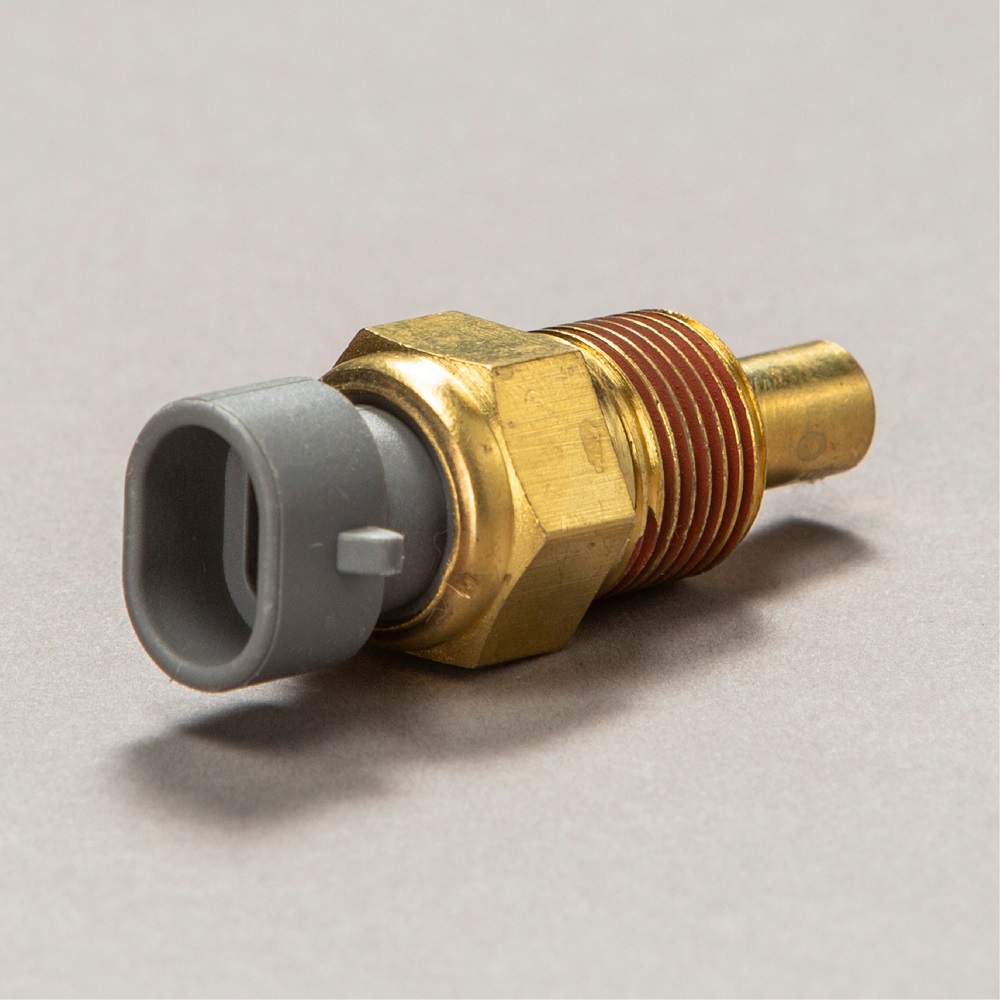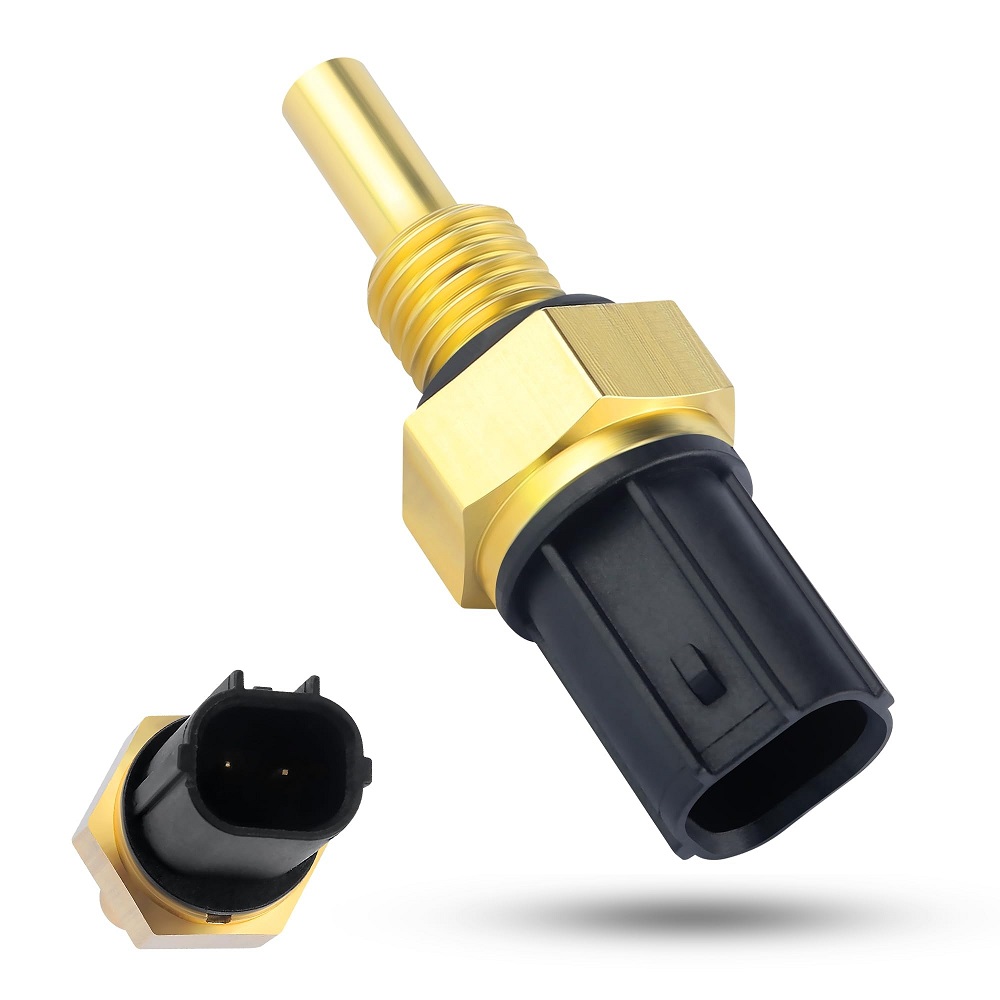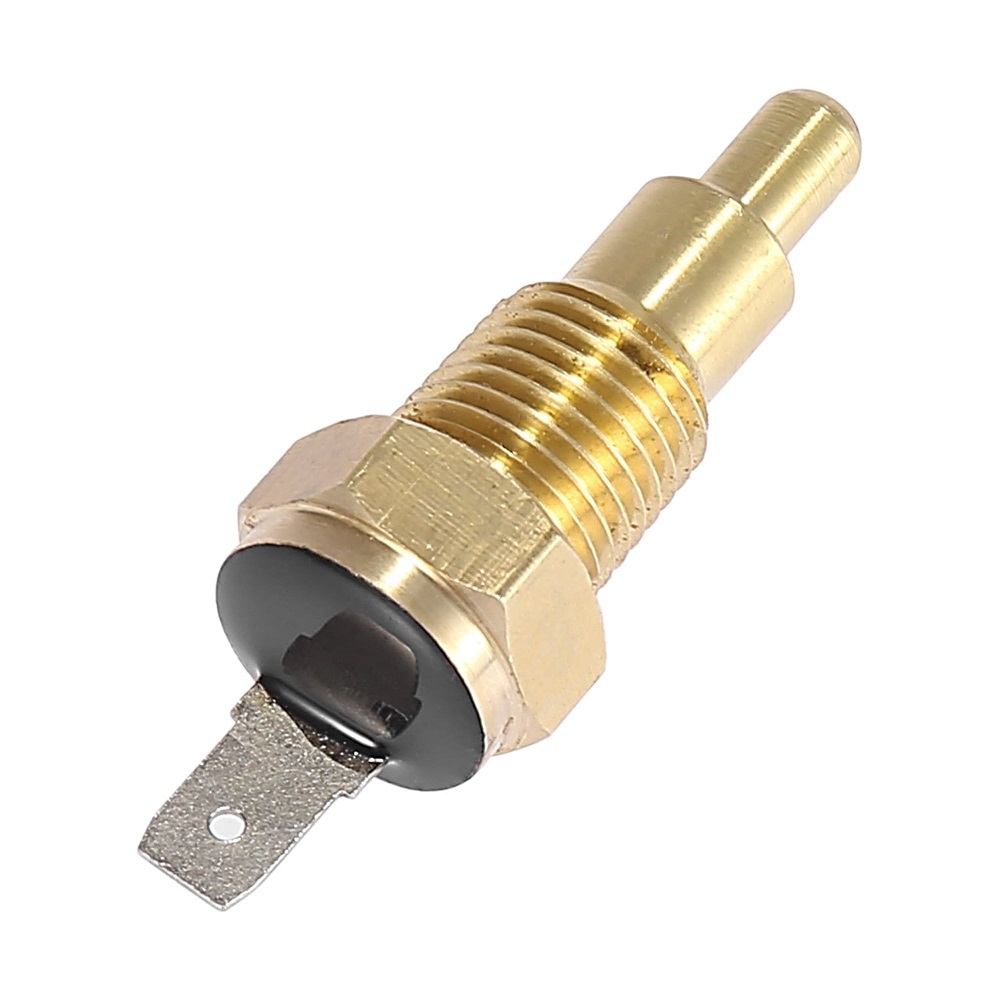What is a Coolant Temperature Sensor?
A coolant temp sensor is a small yet critical component in vehicles. It monitors the temperature of your engine’s coolant. This information is then sent to the engine control unit (ECU). The ECU uses this data to adjust the air-fuel mixture and ignition timing. Maintaining the correct engine temperature ensures optimal performance.
The coolant temp sensor is typically a thermistor. It changes resistance based on the coolant’s temperature. At low temperatures, the sensor’s resistance is high. As the temperature increases, the resistance decreases. This allows the ECU to interpret the precise engine temperature.
Most vehicles have this sensor near the thermostat or in the cylinder head. Its placement allows accurate readings of the coolant’s temperature. By providing real-time data, the coolant temperature sensor helps keep the engine running efficiently and prevents overheating. Without it, the engine might consume excessive fuel, overheat, or underperform.

Importance of the Coolant Temperature Sensor in Vehicle Performance
The coolant temperature sensor plays a critical role in vehicle performance. It ensures the engine operates at an optimal temperature. Proper temperature control helps maintain engine efficiency and extends its lifespan.
Contributing to Better Fuel Efficiency
The sensor adjusts the air-fuel mixture based on coolant temperature. This optimization minimizes fuel consumption during operation and reduces emissions. An efficient temperature allows engines to burn fuel cleanly and maximize miles per gallon.
Preventing Engine Overheating
Overheating can cause severe damage to engine components. The sensor monitors coolant temperature and sends data to the ECU. It helps the system prevent overheating by making necessary adjustments.
Enhancing Ignition Timing
Ignition timing affects engine performance and power output. By providing accurate temperature readings, the sensor ensures precise ignition timing. This results in smoother vehicle operation and maximum power delivery.
Support for Cold Starts
Cold starts can stress the engine, especially in colder climates. The coolant temperature sensor enables the ECU to adjust fuel and air ratios during cold starts. This leads to faster warming and reduces stress on the engine.
Overall Performance Benefits
A well-functioning coolant temp sensor aids in boosting engine reliability and stability. It prevents issues like excessive fuel consumption, misfires, or overheating. In summary, the sensor is key for optimal vehicle performance and efficiency.
How the Coolant Temperature Sensor Operates
The coolant temperature sensor works by using a thermistor to measure the coolant’s temperature. A thermistor is a type of resistor whose electrical resistance changes with temperature. In the case of a coolant temp sensor, the resistance is higher at low temperatures and decreases as the temperature increases.
The sensor is strategically located near the engine’s thermostat or on the cylinder head. This placement allows it to get accurate readings of the coolant temperature. When the engine is cold, the sensor sends a high resistance signal to the engine control unit (ECU), indicating low temperature. As the engine warms up, resistance drops, signaling higher temperatures.

The ECU continuously gathers this data from the coolant temperature sensor. It uses the information to fine-tune the air-fuel mixture and ignition timing. This ensures the engine operates in the most efficient way, optimizing performance while reducing fuel consumption. During cold starts, the sensor guides the ECU to enrich the air-fuel mixture, helping the engine warm up faster.
In modern vehicles, the coolant temp sensor also assists in controlling other systems, such as radiator fans. When the coolant temperature rises above a certain threshold, the sensor activates the cooling fan to prevent overheating. This integration with the vehicle’s computerized systems helps maintain an ideal operating temperature under various driving conditions.
The coolant temperature sensor enables real-time adjustments to engine operation. It ensures the engine performs efficiently and avoids overheating or poor fuel efficiency. Regular maintenance of the sensor is crucial to keep your vehicle running smoothly.
Symptoms of a Faulty Coolant Temperature Sensor
A malfunctioning coolant temp sensor can lead to various issues with your vehicle. Recognizing the symptoms early can save you from costly repairs and prevent further damage.
- Erratic Temperature Gauge: The temperature gauge may show incorrect readings or fluctuate unexpectedly.
- Unusual Fuel Consumption: A faulty sensor may cause higher fuel usage due to improper air-fuel mixture adjustments.
- Engine Overheating: Incorrect temperature data can result in poor cooling system performance, leading to overheating.
- Difficulty Starting the Engine: Cold starts may become challenging if the sensor fails to provide accurate temperature data.
- Reduced Engine Power: You may notice diminished power output as the sensor struggles to optimize ignition timing.
- Black Smoke Emissions: Defective sensors can cause rich fuel mixtures, leading to excessive black smoke from exhaust pipes.
Impact on Engine Performance and Fuel Efficiency
The coolant temperature sensor significantly influences engine performance and fuel efficiency. Problems with the sensor can lead to:
- Decreased Fuel Efficiency: The ECU relies on the sensor for air-fuel mixture controls. A faulty sensor sends incorrect temperature readings, causing the engine to burn more fuel than necessary.
- Rough Engine Operation: Erroneous temperature data can disrupt ignition timing, causing misfires and reducing engine smoothness.
- Poor Cold Start Performance: When the sensor fails during cold starts, the ECU adjusts incorrectly, causing the engine to work harder.
- Increased Emissions: An improper air-fuel ratio increases harmful emissions, worsening environmental impact.
Addressing these symptoms promptly and maintaining your coolant temp sensor can protect your vehicle’s efficiency and prevent long-term engine damages.

Common Causes of Coolant Temperature Sensor Failures
A coolant temp sensor is vital for engine efficiency. However, it can fail due to several causes. Understanding these reasons is important to maintain your vehicle and avoid performance issues.
Age and Wear
Over time, the sensor can wear out or degrade. Continuous exposure to heat, coolant, and engine vibrations weakens its components.
Contaminated Engine Coolant
Impurities in the coolant can damage the sensor. Old or contaminated coolant may cause the sensor to malfunction. Regular replacement of coolant ensures the sensor remains functional.
Electrical Issues
Faulty wiring or connections can interfere with the sensor’s performance. Damaged wires, loose contacts, or corroded connectors can disrupt voltage signals.
Overheating of the Engine
If the engine overheats too often, the sensor may experience thermal stress. Excessive heat can lead to its premature failure.
Physical Damage
External physical damage to the sensor housing can impair its ability to function. It may occur due to accidents or improper handling during repairs.
Poor Installation Practices
Incorrect installation of the sensor can affect its readings and performance. Ensure that the sensor is securely installed as per the manufacturer’s specifications.
Manufacturing Defects
Some sensors may have defects from production. These flaws can result in unreliable temperature readings.
Using Incorrect Coolant
Using the wrong coolant can negatively impact the sensor. Always use the recommended coolant type for your vehicle.
Lack of Regular Maintenance
Neglecting regular inspection and cleaning of the sensor can lead to performance issues. Routine maintenance helps detect and prevent potential problems.
Being aware of these common causes helps car owners keep their coolant temp sensor in good condition. Regular checks and preventive measures ensure your sensor operates efficiently, improving overall vehicle performance.

How to Test a Coolant Temperature Sensor
Testing a coolant temperature sensor ensures your vehicle runs efficiently. A faulty sensor can cause issues. These include poor fuel economy, overheating, and engine performance problems. Regular testing can help detect and resolve problems early, preventing costly repairs.
Tools Needed for Testing
To test a coolant temperature sensor, you will need some essential tools. These tools include:
- Digital Multimeter: Used to measure voltage and resistance accurately.
- Thermometer: Helps gauge the actual temperature of the engine coolant.
- Service Manual: Provides specifications for your vehicle’s coolant temp sensor.
- Basic Hand Tools: Wrenches and screwdrivers to access the sensor.
- Gloves and Safety Goggles: Protects you from heat and accidental splashes of coolant.
- Testing Leads or Probes: Helps connect the multimeter to the sensor.
Having the right tools simplifies testing and ensures accurate results. Always follow safety precautions during this process.
Steps to Replace a Coolant Temperature Sensor
Replacing a coolant temp sensor is a straightforward process. Follow these steps to ensure proper replacement and prevent potential issues:
- Gather Necessary Tools:
- A wrench or socket set
- Screwdrivers
- A new coolant temp sensor
- Vehicle’s service manual
- Catch pan for draining coolant
- Protective gloves and safety goggles
- Ensure Safety First:
- Park your vehicle on a flat surface and turn off the engine.
- Allow the engine to cool down completely to prevent burns or injuries.
- Locate the Sensor:
- Consult your vehicle’s service manual to find the position of the coolant temp sensor.
- Typically, it is near the thermostat or on the cylinder head.
- Drain the Coolant:
- Place a catch pan under the radiator to collect drained coolant.
- Open the radiator drain valve and let the coolant flow out completely.
- Disconnect Sensor Wiring:
- Carefully unplug the electrical connector from the sensor.
- Inspect the wiring for any signs of damage or corrosion.
- Remove the Old Sensor:
- Use the appropriate wrench or socket to unscrew the sensor.
- Remove it carefully to avoid damaging other components around it.
- Prepare the New Sensor:
- Compare the old and new sensors to ensure compatibility.
- Apply a small amount of thread sealant or Teflon tape to the new sensor’s threads.
- Install the New Sensor:
- Screw in the new coolant temperature sensor securely.
- Do not overtighten to prevent damage.
- Reconnect the Wiring:
- Reattach the electrical connector to the new sensor.
- Ensure the connection is tight and secure.
- Refill the Coolant:
- Refill the radiator with fresh coolant.
- Check your vehicle’s manual for the recommended type of coolant.
- Check for Leaks:
- Start the engine and let it run.
- Inspect the area around the sensor and radiator for any leaks.
- Test the Sensor:
- Observe the temperature gauge on the dashboard.
- Ensure it provides accurate temperature readings and the engine operates smoothly.
Preventive Maintenance for Coolant Temperature Sensors
Proper maintenance of the coolant temp sensor is crucial for vehicle performance. Regular checks help ensure its efficiency and longevity. Here are some essential preventive maintenance tips:
- Inspect Sensor Wiring Regularly: Look for signs of wear, corrosion, or damage in the electrical connections. Damaged wires or loose connections can disrupt the sensor’s signals. Replace or fix faulty wiring promptly.
- Keep Coolant Clean: Contaminated coolant can harm the sensor. Check and replace your coolant as recommended.
- Use the Right Coolant Type: Always use the manufacturer-recommended coolant type and ensure it’s of good quality.
- Monitor Engine Temperature: Check the temperature gauge for abnormal readings. Erratic behavior may signal sensor issues.
- Check for Leaks: Regularly inspect for coolant leaks in the radiator, hoses, and near the sensor itself.
- Avoid Engine Overheating: Overheating can damage the sensor. Monitor fluid levels and address cooling system problems.
- Schedule Routine Maintenance: Include the sensor in your usual vehicle maintenance routines. Follow your vehicle’s service manual for frequency.
- Test the Sensor Periodically: Use a digital multimeter to test the resistance of the sensor, especially before long trips.
By following these steps, you can prevent the premature failure of the coolant temp sensor. A well-maintained sensor ensures optimal engine performance and prevents costly repairs. Regular care keeps your vehicle running smoothly for years.

The Importance of the Coolant Temperature Sensor
A Critical Component in Engine Management
In summary, the coolant temp sensor is a critical component of your vehicle’s engine management system. It plays an integral role in monitoring engine temperature, ensuring optimal performance, and preventing damage. Understanding how the sensor works and its significance will enable car owners to make informed decisions regarding maintenance and care. By prioritizing the health of this vital component, you contribute to your vehicle’s longevity and functionality.
Making Informed Maintenance Decisions
When it comes to maintaining your car, knowledge is power. Understanding the role of the coolant temperature sensor allows you to identify problems early and take action. Regular inspections and timely replacements can help avoid serious engine issues. Equip yourself with the information needed to properly care for your vehicle. This knowledge empowers you to be proactive, ensuring the ongoing performance of your engine.
Embracing Responsible Vehicle Care
Finally, embracing responsible vehicle care includes being attentive to essential components like the coolant temp sensor. By integrating regular checks into your maintenance routine, you can keep potential issues at bay. This commitment to vehicle upkeep ensures that your car remains reliable and enjoyable for years to come. As you drive, knowing that your engine’s temperature is well-regulated allows you to enjoy the ride with peace of mind. Prioritize your vehicle’s health, and enjoy the journey ahead!
Leave a Reply